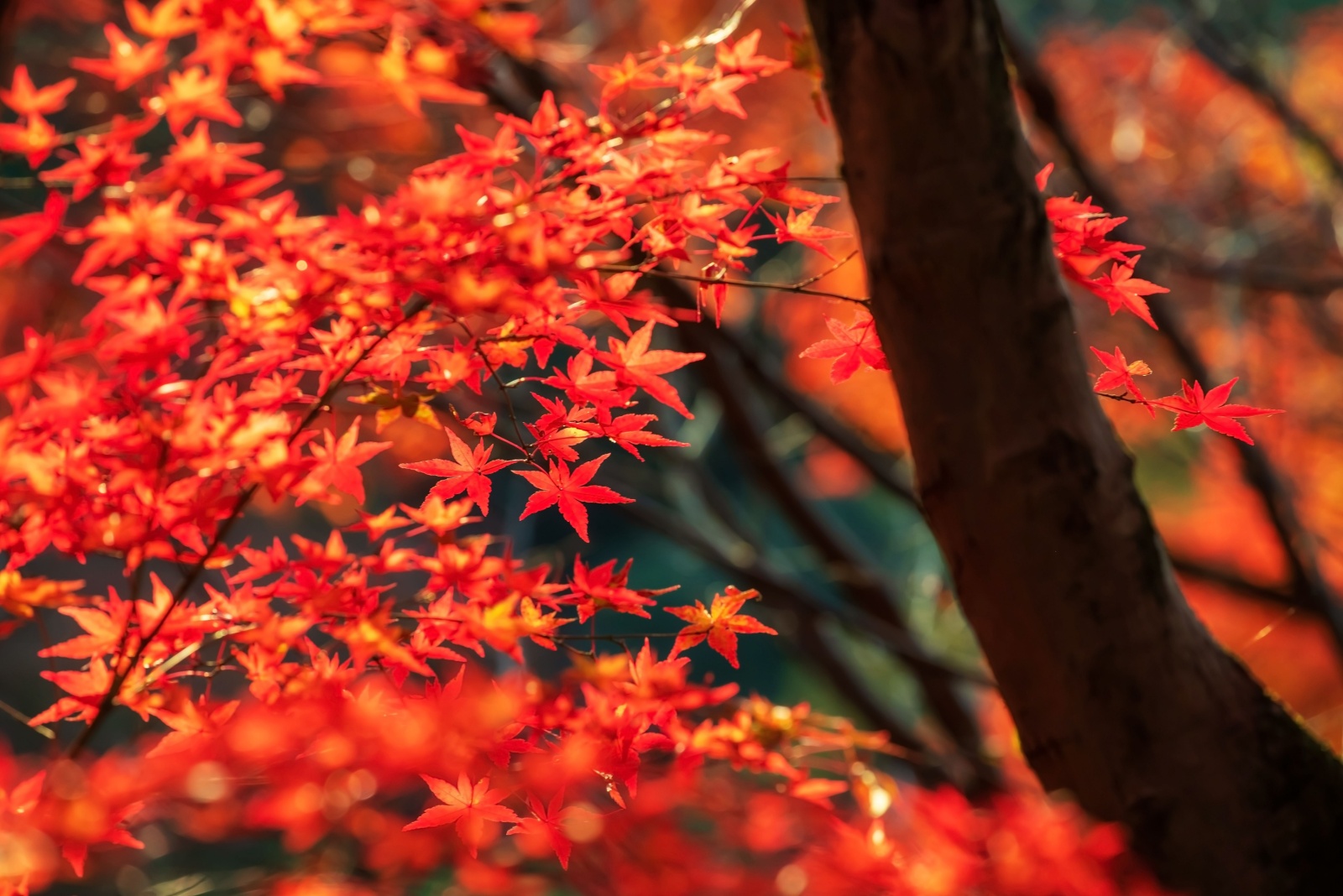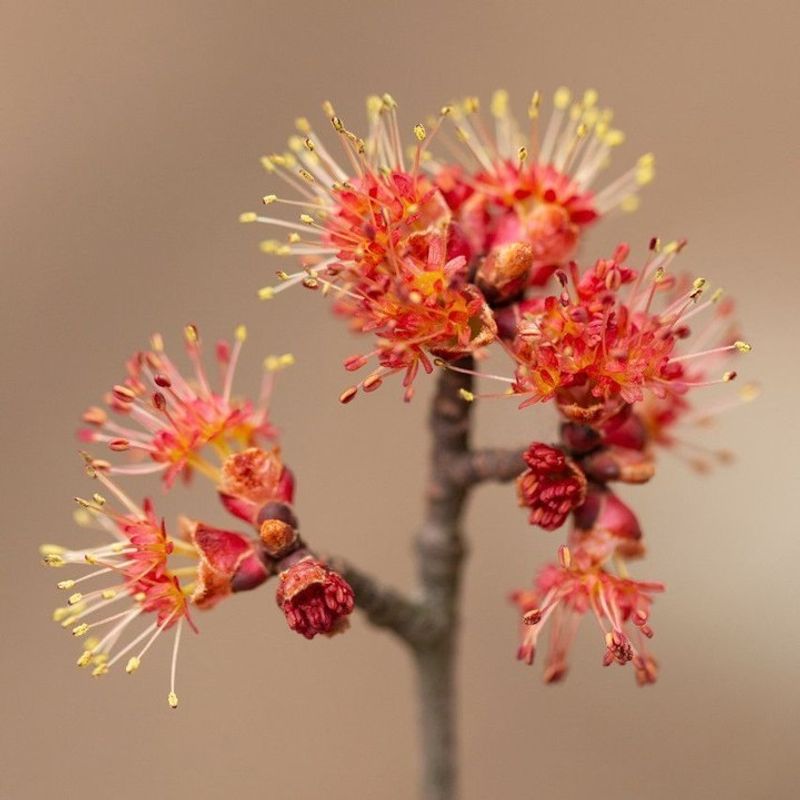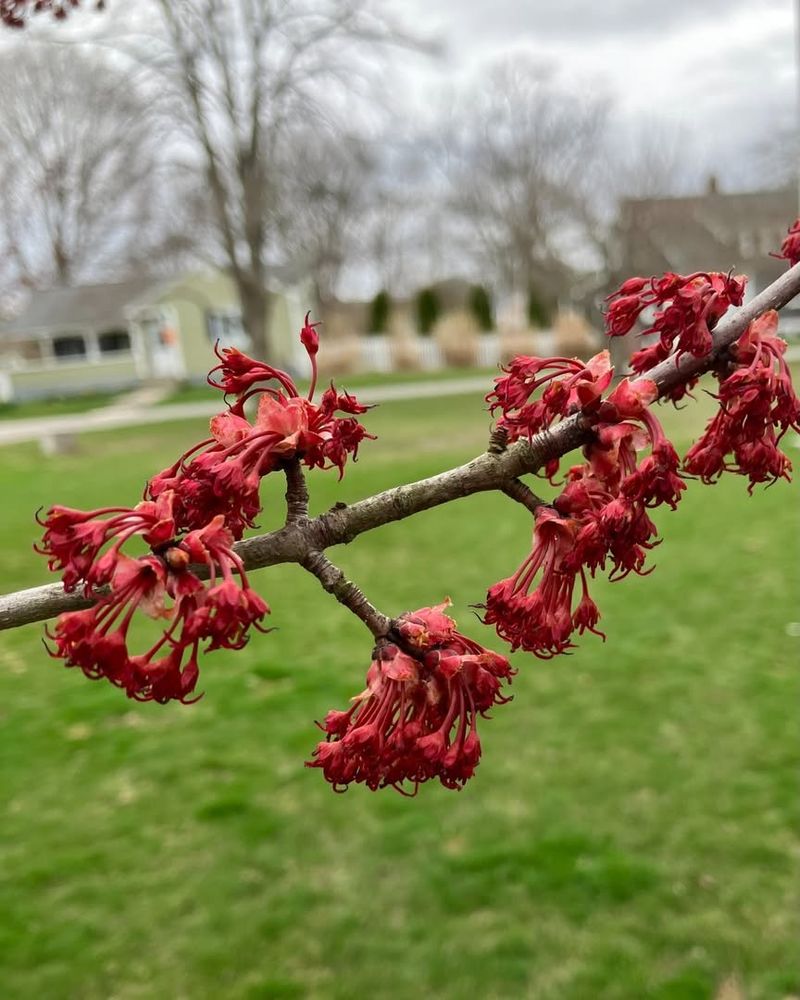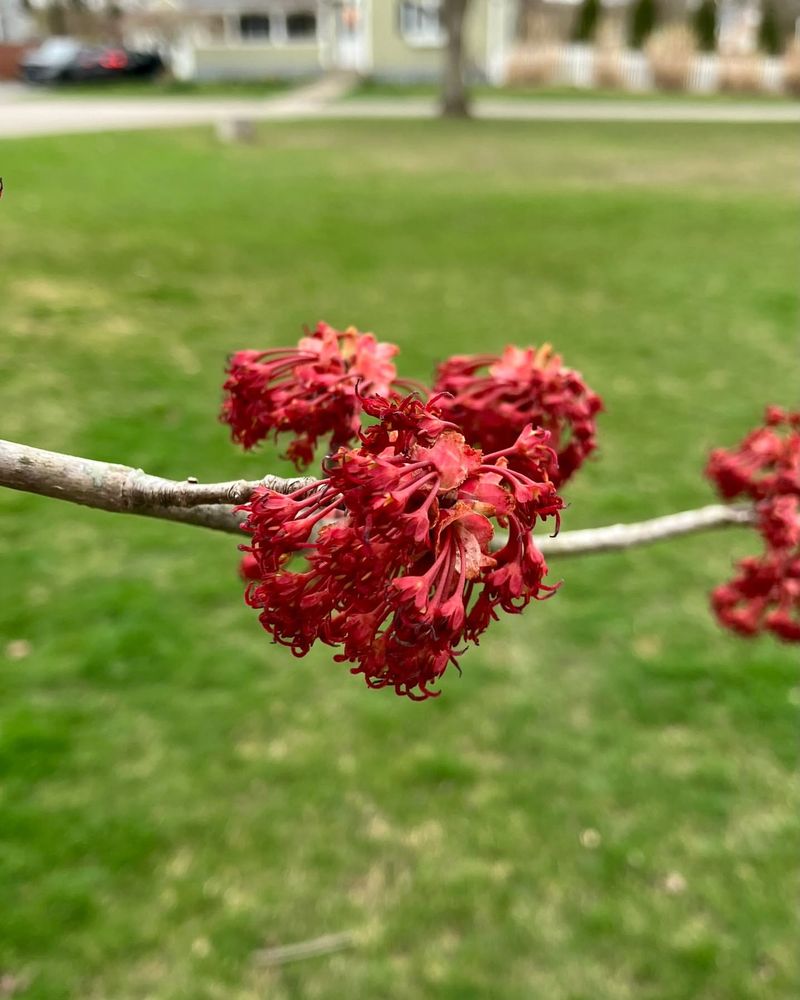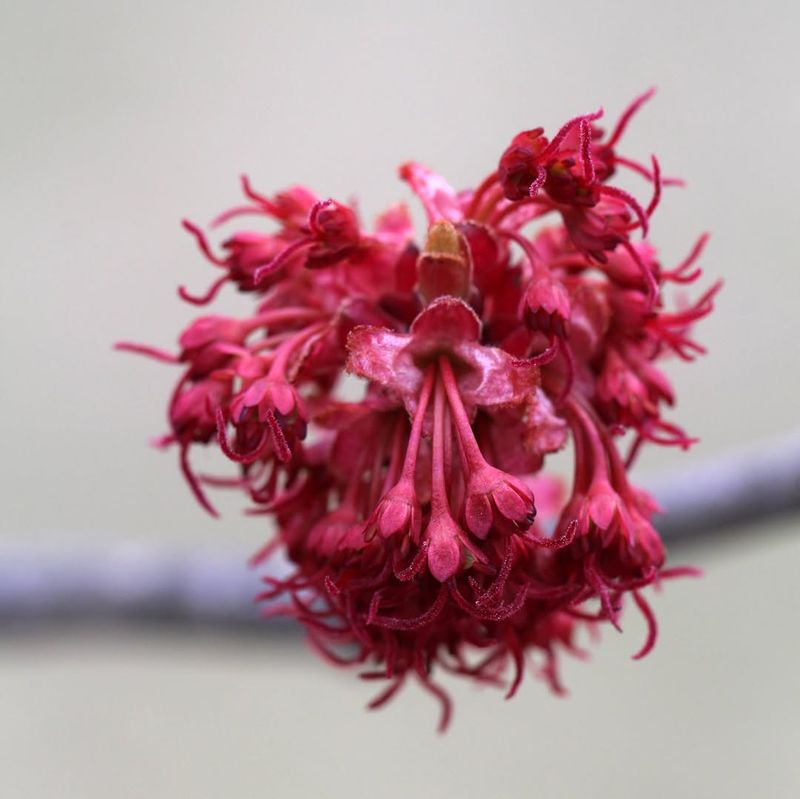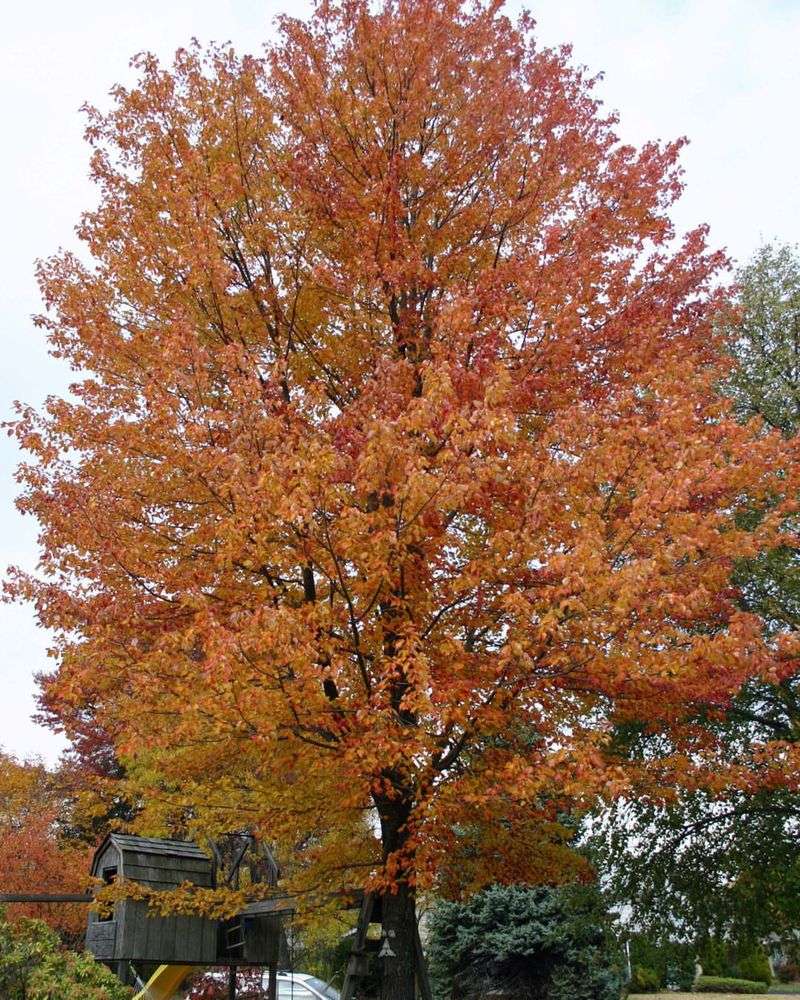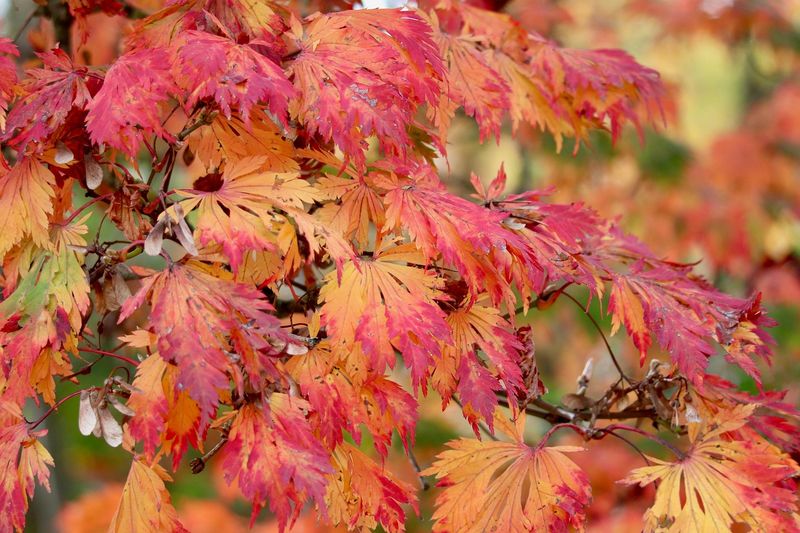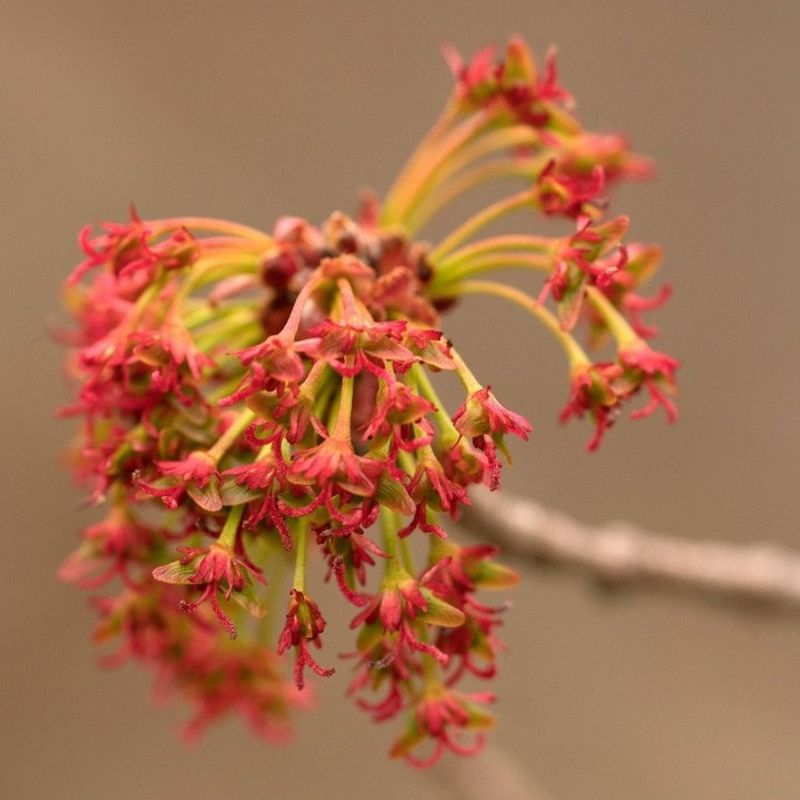Red maple trees are a common sight across Alabama, but in fall, they turn into unexpected pollinator hotspots. While most folks associate bees and butterflies with spring, these trees offer something unique later in the year.
Their vibrant foliage and late-season nectar draw in all kinds of pollinators. It’s a quiet reminder that nature doesn’t stop buzzing just because summer ends.
I’ve learned that paying attention to these seasonal shifts reveals a whole hidden ecosystem. Red maples aren’t just beautiful—they’re busy with life, right in your own backyard.
1. Early Blooming Surprises Everyone
Red maples don’t wait for traditional spring schedules. They start flowering as early as late winter, which means Alabama gardeners often spot the first blooms when other trees are still bare.
This early timing gives pollinators an important food source when options are scarce. Bees emerging from winter dormancy depend on these early flowers for survival.
Watching your local red maples closely during February and March reveals this remarkable phenomenon happening right in your neighborhood.
2. Nectar Production Peaks During Cool Weather
Most flowering trees produce nectar when temperatures climb, but red maples work differently. Their flowers release the most nectar during cooler Alabama mornings, typically between 50 and 65 degrees.
This cooler temperature preference matches perfectly with early spring conditions across the state. Pollinators have adapted to visit these trees during morning hours when nectar flow is strongest.
If you’re in Alabama and want to observe pollinator activity, check your red maples early in the day for the best show.
3. Small Flowers Pack A Nutritional Punch
Don’t let their tiny size fool you. Red maple flowers might look insignificant compared to showy magnolias, but they’re loaded with protein-rich pollen that pollinators need.
Each cluster contains dozens of individual flowers, creating an abundant feast. Native bees throughout Alabama have evolved to recognize these small red blooms as reliable food sources.
The compact flower structure also protects pollen from rain, keeping it accessible even during Alabama’s unpredictable spring showers that can wash out other nectar sources.
4. Male And Female Trees Create Double Opportunities
Red maples are dioecious, meaning individual trees are either male or female. Male trees produce pollen-heavy flowers that attract different pollinators than the nectar-rich female flowers.
This creates diverse pollinator activity across Alabama neighborhoods with multiple red maples. Having both sexes nearby means more pollinator species find what they need.
Homeowners who plant both types essentially double the ecological value of their landscape, supporting a wider range of beneficial insects throughout the season.
5. Native Species Recognize Familiar Signals
Red maples are native to Alabama, which means local pollinators have centuries of evolutionary relationship with these trees. Native bees instinctively know when and where to find red maple flowers.
This familiarity makes red maples more effective at supporting pollinator populations than exotic ornamental trees. The flowers emit specific chemical signals that Alabama’s native insects recognize immediately.
Planting or preserving red maples in your yard supports the natural balance that’s existed in the region for thousands of years.
6. Abundant Trees Mean Consistent Resources
Red maples grow naturally throughout Alabama, from Mobile to Huntsville. This widespread distribution creates a reliable network of food sources for migrating and resident pollinators.
When one tree finishes blooming, another nearby is just starting, extending the feeding period. This staggered blooming happens because of slight elevation and microclimate differences across the state.
For pollinators, this means they can follow a predictable trail of red maple flowers throughout early spring, ensuring their survival during a critical time.
7. Shelter And Food In One Package
Beyond flowers, red maple trees provide essential shelter for pollinators. The bark harbors overwintering native bees, while cavities host solitary bee species.
In Alabama’s variable spring weather, having both food and protection in one location helps pollinators conserve energy. They can feed, rest, and hide from storms without traveling far.
Mature red maples in your yard essentially become pollinator hotels, offering year-round habitat that goes far beyond the brief blooming period each spring season.

